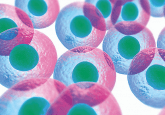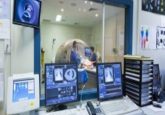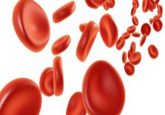Device developed to sort tumor cells and better predict spread of cancer

New research conducted at the Leslie Dan Faculty of Pharmacy at the University of Toronto (ON, Canada) has led to the development of a novel device that enables scientists to visualize the heterogeneity of circulating tumor cells (CTCs). The findings have been published in the journal Angewandte Chemie.
Circulating tumor cells enter the bloodstream from the site of the original cancer and are postulated to be the catalysts behind metastatic tumor formation. Researchers are keen to learn about these CTCs, which they believe could hold the potential to increase the understanding of a cancer without the need for biopsy. This increased understanding may include an ability to predict a cancers aggressiveness and potential to cause metastatic disease.
The device utilizes nanoparticles to tag CTCs and sorts then into subpopulations according to the phenotype of the cells. This then provides a unique insight into the nature of CTCs in an individual’s blood. Existing technologies are less able to differentiate between the different cells in a sample; they simply count the CTCs rather than identifying the cells most likely to become highly metastatic.
“Recognizing that characterizing the phenotype of circulating tumor cells is more useful for cancer management than quantitating the cells present in a blood sample, we set out to devise a method that would allow us to capture and distinguish between these cells,” commented Shana Kelley of the Leslie Dan Faculty of Pharmacy.
“In the lab, we were able to demonstrate that the tool was not only highly effective at differentiating these cells, but also proved to be more sensitive than the current leading methods of cellular sorting,” Kelley added.
In collaboration with colleagues at the Sunnybrook Health Sciences Centre, Toronto and the London Health Sciences Centre, London (both ON, Canada), the team collected samples from prostate cancer patients to test the clinical efficacy of the new technology.
Robert Nam of Sunnybrook’s Odette Cancer Centre explained: “Through this study, over 20 patients with localized prostate cancer were tested.”
“Interestingly, significant levels of these circulating tumor cells were observed in all of the patients. Even more intriguing was the observation of very different subpopulation profiles across this group of patients that all received very similar clinical diagnoses, indicating that molecular-level difference may exist in the patients’ tumors,” Nam commented.
The researchers acknowledged the small sample size of the test group and plan to further validate their findings in groups with other cancers, including breast, colon, ovarian, lung, and pancreatic cancer.
Kelley stated: “Ultimately, we believe that this sensitive technology possesses the potential to provide more useful information about these cells, leading to better diagnoses and improved patient outcomes.”
The team are pursuing new research opportunities in the hope of enabling more accurate and less invasive cancers diagnoses, with an overarching aim to improve the health outcomes for cancer patients.
Source: Leslie Dan Faculty of Pharmacy at the University of Toronto press release



